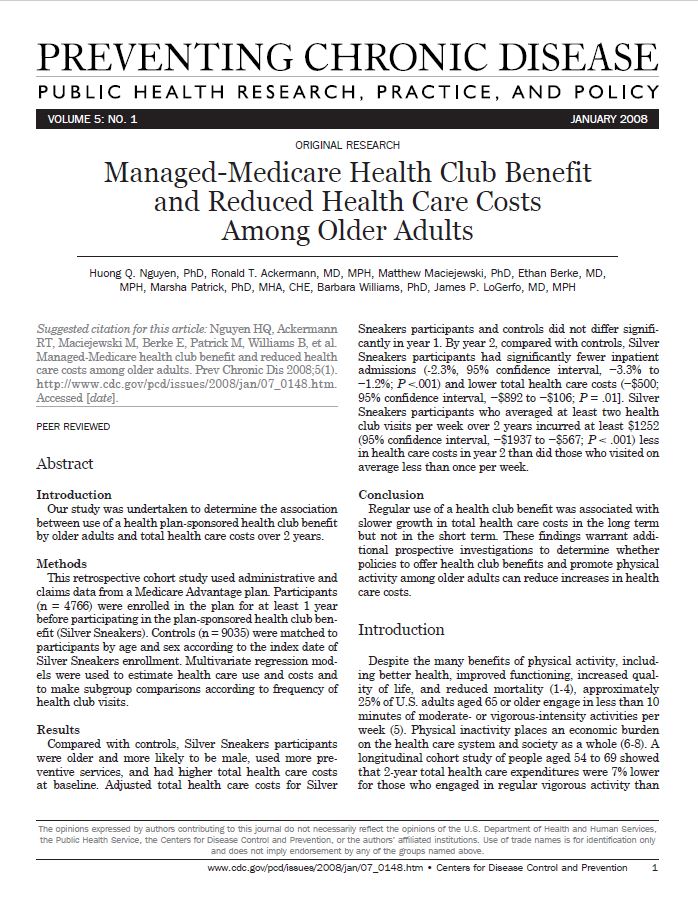Nguyen, HQ, Ackermann, RT, Maciejewski, M, Berke, E, Patrick, M, Williams, B, LoGerfo, JP
Preventing Chronic Disease, 2008
Abstract
Introduction: Our study was undertaken to determine the association between use of a health plan-sponsored health club benefit by older adults and total health care costs over 2 years.
Methods: This retrospective cohort study administrative and claims data from a Medicare Advantage plan. Participants (n = 4,766) were enrolled in the plan for at least 1 year before participating in the plan-sponsored health club benefit (SilverSneakers®). Controls (n = 9,035) were matched to participants by age and sex according to the index date of SilverSneakers enrollment. Multivariate regression models were used to estimate health care use and costs and to make subgroup comparisons according to frequency of health club visits.
Results: Compared with controls, SilverSneakers participants were older and more likely to be male, used more preventive services, and had higher total health care costs at baseline. Adjusted total health care costs for SilverSneakers participants and controls did not differ significantly in year 1. By year 2, compared with controls, SilverSneakers participants had significantly fewer inpatient admissions (-2.3%, 95% confidence interval, −3.3% to −1.2%; P <.001) and lower total health care costs (−$500; 95% confidence interval, −$892 to −$106; P = .01]. SilverSneakers participants who averaged at least two health club visits per week over 2 years incurred at least $1,252 (95% confidence interval, −$1,937 to −$567; P < .001) less in health care costs in year 2 than did those who visited on average less than once per week.
Conclusion: Regular use of a health club benefit was associated with slower growth in total health care costs in the long term but not in the short term. These findings warrant additional prospective investigations to determine whether policies to offer health club benefits and promote physical activity among older adults can reduce increases in health care costs.

Key Takeaways:
- SilverSneakers participation resulted in reduced cost trends. Although SilverSneakers participants had higher healthcare costs at baseline, their costs were the same as non-participants by year one and were significantly lower (average, -$500) in year two
- SilverSneakers participants had significantly fewer inpatient hospital admissions in the second year
- Greater participation was associated with higher savings—participants who averaged two or more SilverSneakers health club visits per week had average savings of $1,252 in year two compared to those with fewer than one visit per week














